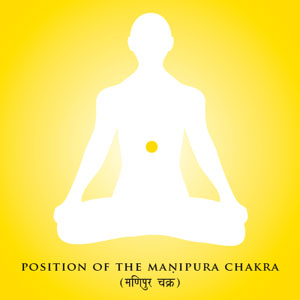 |
| BKS Iyengar: So blissful, so fashionable. |
In Light on Yoga, Iyengar states that Garudasana strengthens the
ankles and releases tension in the shoulders. He states that the garuda, or
eagle, is the king of all birds. According to Iyengar, “Garuda is represented
as the vehicle of Vishnu and as having a white face, an aquiline beak, red
wings and a golden body.” Garudasana is a very powerful pose. I feel strong and
alive when I’m wrapped right arm under left and right leg over left. I feel
rooted and confident. Until I read Iyengar’s description of Garudasana, I
hadn’t thought much about what colors might be associated with an eagle. Red
and golden are perfectly related to the Chakras I feel most connected with while
in this pose.
Manipura Chakra is located in the solar plexus or
mid-spine, and its color corresponds with the image of the eagle’s golden body.
Manipura Chakra is centered on power and ambition. Both of these qualities must
be present in the yoga student to achieve this pose. Conversely, when a student
achieves this pose, there comes a feeling of power and ambition. Though Iyengar’s
eagle has red wings, the Muladhara Chakra associated with the color red is
located in the tailbone. Considered the root Chakra, Muladhara is supportive
and extends down from the base of the torso through to the legs and feet, all
essential components of Garudasana. This pose requires a strong sense of balance.
Visualizing the physical locations of the Muladhara and Manipura Chakras helps
to focus on and maintain that balance. Lately I’ve been concentrating on
engaging Mula and Uddiyana Bhanda while in this pose, and have found that very
helpful in staying balanced. These Bhandas correlate with the Muladhara and
Manipura Chakras as well.
Establishing a steady drishti is something I find
difficult in Garudasana. Since the arms are raised in front of the face, I find
myself trying to find a point between my arms in front of me. When my arms
obstruct this point, it is extremely tough to stay balanced. When I try to
focus on a point on my forearms, I find that it is too close and my balance becomes
compromised. Iyengar does not comment on drishti for Garudasana in Light on Yoga, though in his photo his
arms are more tightly wound than mine generally are, so there is less
obstruction in front of the eyes. Keeping an internal drishti is an option
during any pose, though is difficult in the more intermediate balancing
postures.
 |
| Eagle. See how happy she is? |
Garudasana would be well placed in a class built around themes
of strength, courage or cultivation of personal power. It is also an excellent
choice for those that work while sitting at a desk. The arm placement in
Garudasana helps to draw the shoulder blades away from each other, opening the
upper back. The legs and ankles are also fired up in this pose. This posture is
a welcomed relief for those that sit hunched over a keyboard and computer
screen all day, though the effects of Garudasana are certainly beneficial to
all.


This sounds awesome. I am adding it to my morning routine.
ReplyDeleteHer top is awesome. Makes me want to start a line of shiny, metallic yoga clothes. (Seriously. We all need some everyday sparkle.)
ReplyDeleteI hope you keep blogging here even though the official classroom training is all done. (sniff)